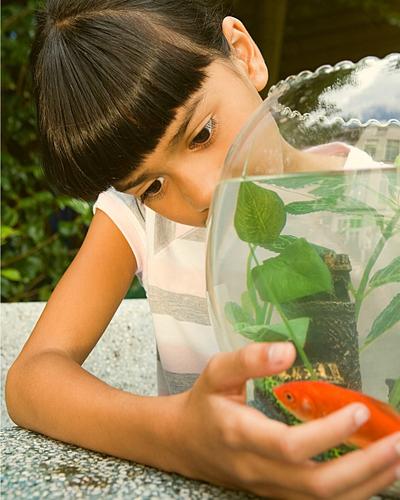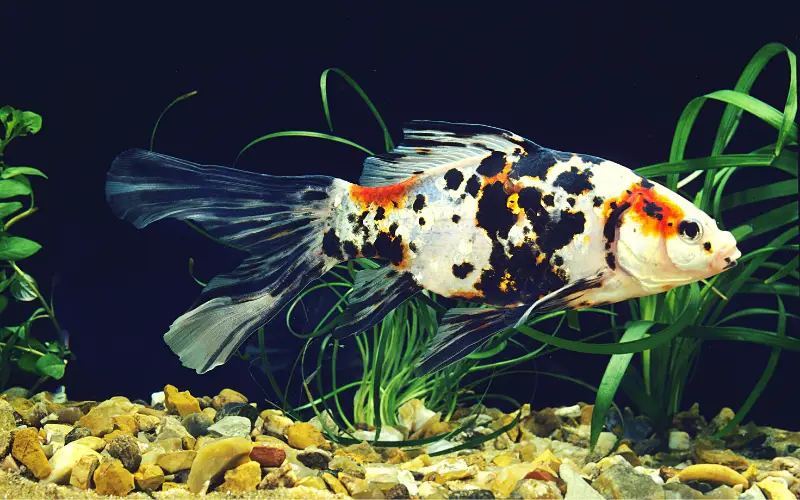Have you ever noticed mysterious black spots on your goldfish and wondered what they mean? Are they signs of illness, aging, or something more serious? If you’re a goldfish owner, spotting these unexpected marks can feel alarming, leaving you scrambling for answers. But don’t worry—you’re not alone, and there’s often a simple explanation behind this puzzling phenomenon.
Black spots on goldfish can occur for several reasons, ranging from harmless pigmentation changes to indicators of water quality issues or even healing injuries. Understanding the cause is essential for keeping your aquatic friends healthy and stress-free.
In this blog post, we’ll dive deep into the possible reasons for these black spots, how to identify if something is wrong, and what you can do to restore your goldfish’s vibrant appearance.

Whether you’re new to fishkeeping or an experienced aquarist, this guide will equip you with the knowledge to tackle this common concern confidently.
Let’s uncover the mystery behind those black spots and responding so quickly to ensure your goldfish thrives!
Table of Contents
ToggleWhat Does Black Spots on a Goldfish Mean?
Black spots on a goldfish can indicate several potential issues, ranging from stress to illness. Generally, when a goldfish has developed black spots, it could be a sign of a condition like black spot disease,” which is often caused by parasites or poor water quality.
When these spots beginning to appear, it may also suggest that the fish is struggling with high levels of ammonia or nitrite in its aquarium environment.
Monitoring these changes is crucial, as they can significantly impact the fish’s health and overall well-being. Recognizing these symptoms early can lead to timely diagnosis and treatment, allowing your goldfish to recover successfully.
Moreover, the black mark on goldfish may also be indicative of the goldfish experiencing ammonia burn, which occurs when the ammonia level in the tank water exceeds safe limits. This condition can cause the fish to turn black as a response to stress.
Therefore, observing your goldfish for any behavioral changes or additional symptoms, such as loss of appetite or lethargy, is essential. Understanding the implications of these dark spots can guide you in taking appropriate measures to restore your goldfish to good health.
What Causes Black Spots on Goldfish?
The causes of black dots on goldfish body scales can vary widely, with the most common being poor water quality. If your goldfish is turning black, it might be an indication of high ammonia levels in the tank water.
Ammonia burn often results from inadequate filtration or infrequent water changes, leading to a toxic environment for your fish.
Additionally, uneaten food can contribute to increased ammonia levels, complicating your goldfish’s living conditions. Regular water testing using a test kit or test strip is vital to ensure that ammonia, nitrite, and nitrate levels remain within safe ranges for goldfish.
Another potential cause of black spots is stress due to overcrowded conditions in the aquarium. Several goldfish in a gallon tank without sufficient space can lead to competition for resources, ultimately causing stress and changing color.
This stress may also manifest as black patches on their fins or gills. Furthermore, parasitic infections can cause dark spots as the fish’s body and fins reacts to the presence of pathogens. Identifying the root cause of these symptoms is essential for effective treatment and ensuring a healthier environment for your goldfish.
Common Causes of Goldfish Turning Black
Goldfish turning black can stem from several factors, mainly related to water quality and health issues. One common cause is ammonia toxicity, which can result from inadequate tank maintenance or a sudden spike in tank water pollution.
Elevated ammonia levels can lead to a condition where the goldfish gets black spots or even turns entirely black as a defensive response. To prevent this, it is crucial to conduct regular water changes and monitor ammonia levels with a reliable test kit.

Another reason for goldfish to develop dark spots is the presence of specific diseases, such as ich. Ich can cause stress and irritation, prompting your goldfish to change color as part of its immune response.
Moreover, environmental stressors such as sudden temperature fluctuations or aggressive tank mates can also lead to a goldfish turning black. Ensuring that your aquarium is well-maintained and that your goldfish are kept in a peaceful environment will help mitigate these issues and maintain their vibrant colors.
How to Cure Black Spots on Goldfish?
Curing black spots on goldfish requires a multi-faceted approach focused on improving water quality and addressing any underlying health issues. The first step is to test the water regularly, using a test kit or test strip, to monitor ammonia, nitrite, and nitrate levels.
If high ammonia levels are detected, perform a water change immediately to dilute the toxins. Additionally, ensure that your filtration system is functioning properly to maintain good water quality.
In cases where black spots are caused by disease, treatment may require specific medications or remedies. Consulting with a knowledgeable pet store or aquatic veterinarian can provide guidance on the proper diagnosis and treatment options.
Furthermore, providing your goldfish with a stress-free environment is essential. This might involve reducing tank population, rearranging decorations, or adding plants for hiding spots, allowing your fish to feel secure and promoting a healthy recovery.
Commonly Asked Questions about Treating The Black Dots on Goldfish (FAQs)
How to Treat Black Spots on Goldfish?
Treat black spot on goldfish by ensuring optimal water quality, maintaining a balanced diet, and consulting a veterinarian for potential diseases like black spot disease or ammonia poisoning.
How to Get Rid of Black Spots on Goldfish?
To get rid of black spot on gold fish, improve water quality, perform regular water changes, and consult a vet for treatment options like medications for possible infections or diseases.
How can I tell if my goldfish is sick when I see black areas?
If your goldfish has black areas, it’s essential to observe other symptoms, such as changes in behavior, eating habits, or physical appearance. If your fish exhibits lethargy, loss of appetite, or other concerning signs, it may indicate that the goldfish is sick.
What is the best way to treat black spot disease in goldfish?
To treat black spot disease, you should first assess the water quality, ensuring that ammonia and nitrites are at safe levels. You can also use aquarium salt to help alleviate symptoms. In severe cases, moving the affected fish to a quarantine tank may be needed to prevent the spread of any underlying issues.
Can changing the water help with black spots on my goldfish?
Yes, changing the water can help improve the overall quality of the environment. If the water has a small amount of ammonia or is polluted with fish waste, changing it can reduce stress on your goldfish and potentially prevent further issues with black spots.
Are black spots on Oranda goldfish a cause for concern?
Black spots on oranda goldfish can be normal due to their genetic makeup, but sudden changes in coloration should be monitored. If the spots increase in size or number, or if you notice other symptoms, it may indicate a health issue that needs to be addressed.
What does it mean when my goldfish has a color change along with black spots?
A color change along with black spots can indicate stress or illness. It may also be related to ammonia burns, which can occur if the water quality is poor. Monitoring the environment and ensuring proper care is essential to prevent further complications.
How can I assess the water quality for my goldfish with black spots?
You can assess water quality by testing for ammonia, nitrites, and pH levels using aquarium test kits. Maintaining the right ppm levels of these parameters is crucial for the health of your goldfish and can help in managing issues like black spots.
Should I consult a veterinary professional if my goldfish has black spots?
If the black spots persist or are accompanied by other symptoms, consulting a veterinary professional is advisable. They can provide a thorough examination and may offer treatments or solutions tailored to your specific situation.
How quickly should I respond if I notice black spots on my goldfish?
It is essential to respond quickly if you notice black spots, as early detection and intervention can prevent more severe health issues. Monitoring your goldfish for any additional changes and improving water quality should be your immediate steps.
Where can I find supported answers for dealing with black spots on goldfish?
You can find supported answers on platforms like justanswer.com, where experienced appraisers and aquarists provide information based on their expertise and research from the past 20 years.
Conclusion
Dealing with black spots on goldfish can be concerning, but understanding the underlying causes and potential solutions is key to ensuring their health. Regular monitoring of water quality, prompt action when symptoms arise, and providing a stress-free environment can significantly enhance your goldfish’s well-being. If you notice your goldfish has developed dark spots, do not hesitate to test the water and consult with experts for diagnosis and treatment options. By taking proactive steps, you can help your goldfish thrive and enjoy a better experience in its aquatic home.
You might also like
- Bubble Eye Goldfish 101: Comprehensive Beginners Care Guide
- Will Goldfish Mate in a Tank? Step-By-Step (Breeding Guide)
- Why Is My Goldfish Turning Black: 5 Common Causes (Solved)
- Do Gold Fish Need Filters In Their Tank: (Definitive Guide)
- What Do Goldfish Eggs Look Like? 5 Essential Caring Tips
- Goldfish with Red Spots 101: Causes, Prevention & Treatment
- Black Moor Telescope Goldfish 101: a Comprehensive (Beginners Guide)




